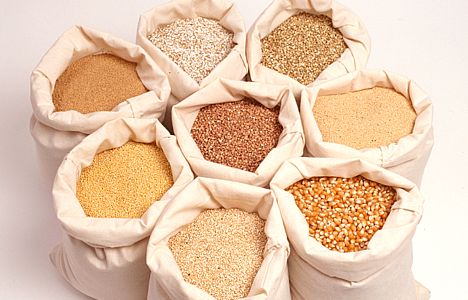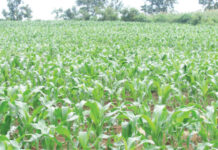One of the major challenges confronting farmers in the country is their inability to properly store seed crops, which is responsible for aflatoxin and moulds in stored crops.
In order to effectively tackle the issue, the Nigerian government in the recently released Agriculture Promotion Policy said that N66 billion had been allocated for the establishment of 33 silo complexes, 25 grain aggregation centres and 9 units of Blumberg warehouses, which have now been privatised by way of concession.
Dr. Samson A. Odedina, Provost of the Federal College of Agriculture, Akure, advises that farmers only keep clean seeds in stores. He said most of the insect pests start from the field and are carried to stores and warehouses.
Best ways to store
Dr. Odedina stated that the type of storage depends on what you are using the grains for; whether it is for re-planting immediately, for feed, short-term storage or long-term storage, and on the volume of the produce to be stored.
He advised farmers keeping grains in stores and warehouses to maintain good ventilation in order to prevent humidity build-up or contamination.
An Agricultural Economist from the International Institute of Tropical Agriculture (IITA), Dr. Abdoulaye Tahirou, explained that non-chemical storage ensures no residue is left in the produce thus ensuring food safety and saving farmers from incidences of crop ban at global markets.
“Non-chemical storage can save the situation of produce being banned, you actually see that Purdue Improved Cowpea Storage (PICS) bag is the solution for small holder farmers,” he said.
The Improved Cowpea Storage (PICS) bag technology
Abdoulaye explained that the PICS bag is a three layered plastic bag that is recommended for farmers for storing their produce, adding that each PICS bag gives farmers the opportunity to store grains properly without using chemicals.
Speaking further, he pointed out that PICS bags initially designed as a solution storage method for cowpea (beans) were experimented with other grains by farmers and they proved very successful. He explained that the success rate is 100% guaranteed provided there are no holes on the bag.
Ahmad Idris, Block Extension Supervisor for Tudun Iya Funtua Zonal Office Katsina State Agricultural and Rural Development Authority (KTARDA), said, “Information about PICS bags is not well circulated to farmers, they are not easily convinced to accept new technology,” he noted.
“This is the best storage method you can use to store grains, Kenya has been using these bags and they have proven to be very successful. We have recorded about 80% success rate using the PICS bags,” he said.
Ahmad, however, lamented that farmers still use harmful storage chemicals like ‘Gamalin A’ despite warnings by extension agents.
The appropriate moisture level required
Ahmad Idris, said moisture is one of the major causes of storage losses as such grains should be properly dried before they are kept so as to eliminate the avenue for microorganisms to thrive.
Speaking on moisture level, Abdoulaye said, moisture content of grains has to be anywhere between 10% and 12% and can be measured by taking a grain and putting it in your teeth, if it cracks its dry.
Ahmad said silos which are relatively the best storage method are not available to majority of farmers due to high cost of constructing them, as such they store grains the traditional way.
A farmer, Malam Abba, said he uses the normal storage bags for storing his grains. He said to prevent termites’ attack they used powdered insecticide to protect the grains.
He added that some people mixed some chemicals which is also very effective and that the mixtures are readily found in market.





